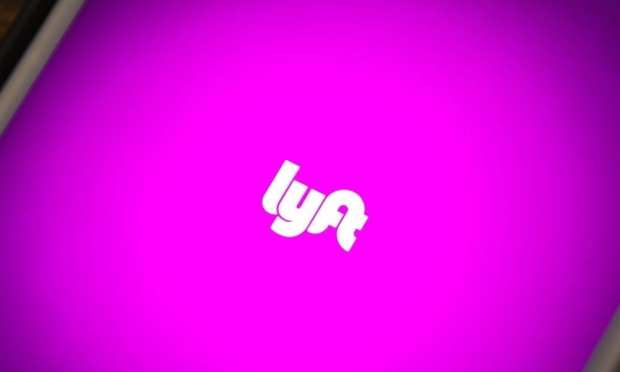Lyft Wants To Reward Consumers Who Sell Their Cars

Go big or go home — that seems to be at least part of the thinking behind the latest effort to promote more ridesharing and more use of subscription commerce.
The company behind this new effort is Lyft. According to a Reuters report on Thursday (Nov. 7), the transit-as-a-service operator is offering car and truck owners looking to offload their vehicles a deal: Sell those vehicles via online retail service Carvana and get in return $250 worth of Lyft credits, plus three months of free membership in Lyft’s new Lyft Pink membership subscription program. For now, the program is open only to users in Chicago, Los Angeles and San Francisco, though Lyft reportedly wants to expand it.
In late October, the ride-sharing company started to roll out its Lyft Pink offering. The membership plan costs $19.99 a month and comes with a 15 percent discount on all car rides. It is intended for riders who use Lyft two to three times per week or more. The discount does not apply to bike or scooter rides but Lyft Pink members get three complimentary 30-minute bike or scooter rides per month in select markets.
Other perks offered with Lyft Pink include priority airport pickups, waived lost and found fees and a break on cancellations, with up to three cancellation fees covered each month. There will also be occasional seasonal discounts, premium mode discounts (e.g. Lux or XL) or partnership offers, Lyft’s website said. This new membership plan replaces Lyft’s year-old All-Access Plan, which gave customers up to 30 rides for $299 a month. Any customer who subscribed to All-Access will get an enrollment offer for the new membership service.
Subscription Pull
The Lyft program joins other recent developments in the world of vehicle subscription services as more consumers consider the possibility of not actually owning cars and trucks. For instance, earlier this year, Enterprise Holdings reportedly ran tests in three states to figure how many consumers would pay (pretty hefty) subscription fees for reliable access to vehicles instead of renting them the traditional way.
Enterprise is hardly the first player in the general automotive industry to go with subscription commerce. Luxury automakers, among others, have already gone that route — in large part to attract younger consumers who might not want to own vehicles, or who are drawn to the ability to switch vehicles with greater frequency.
In fact, according to PYMNTS research, the anticipated compound annual growth rate (CAGR) of the global automotive subscription services market through 2022 is 71 percent. More generally, that research also shows the growth of all forms of subscription retail. Take meal kits as one example — the projected value of meal kit subscription sales in 2018 is $3 billion. Take software as another — the share of Software as a Service (SaaS) software vendors that will shift to subscription-based business models by 2020 is 80 percent.
Vehicles and homes are among the most expensive purchases consumers make. But unlike homes, vehicles typically depreciate in value as automakers continue building new and improved models with additional features. This means vehicle owners are making large investments in purchases that will ultimately lose value upon being resold.
One of the key benefits of a vehicle subscription is easy access to a new model. When subscribers tire of their current rides, they can access new ones with fewer hassles. Subscribers are not faced with selling their current vehicles or breaking leases before they expire. What’s more, many subscription offerings also include maintenance, repairs and the cost of insurance.
Millennials, too, are helping to drive innovation in this general space. Indeed, public transportation ridership has increased 21 percent since 1997, and younger riders often view buses, trains and shuttles as eco-friendly ways to travel. And according to one report from earlier this year, that consumer segment is spending less on vehicles than are previous generations — further indication that subscriptions and related programs could appeal to these real and would-be drivers.
Targeted Appeal
As Lyft seeks to get more drivers away from needing to own their own vehicles — a sign, perhaps, that more consumers are ready to leave behind traditional notions of ownership, and an indication of the growth of the sharing economy — the ridesharing landscape is also changing, with more services seeking to appeal to particular consumer niches.
That applies to back-to-school carpools, and the the fledgling ridesharing service Zum. Zum (pronounced like “zoom”) focuses on using private rideshares to get children to and from school and their extra circular activities. In a PYMNTS interview, Ritu Narayan, CEO and founder of Zum, talked about where the company fits into the ridesharing space, and the unique challenges faced by Zum.
Zum is a different creature than other ridesharing services, even those that are already used by parents to get children to and from school, Narayan told PYMNTS. “We offer a very high level of trust and safety,” she said. Perhaps most importantly, all drivers undergo background checks that include fingerprint authentication, and all Zum drivers must also have least three years’ experience in childcare — that means, she said, that the Zum driver pool includes stay-at-home mothers, coaches, nurses, professional childcare workers and others accustomed to being around children. As well, all Zum drivers meet TrustLine certification standards, among the highest such standards around. All Zum drivers must use vehicles that are no older than 2009 models.
Those are just a few of the changes taking place in this area of payment and commerce — you can count on more innovation and disruption in the months to come.
